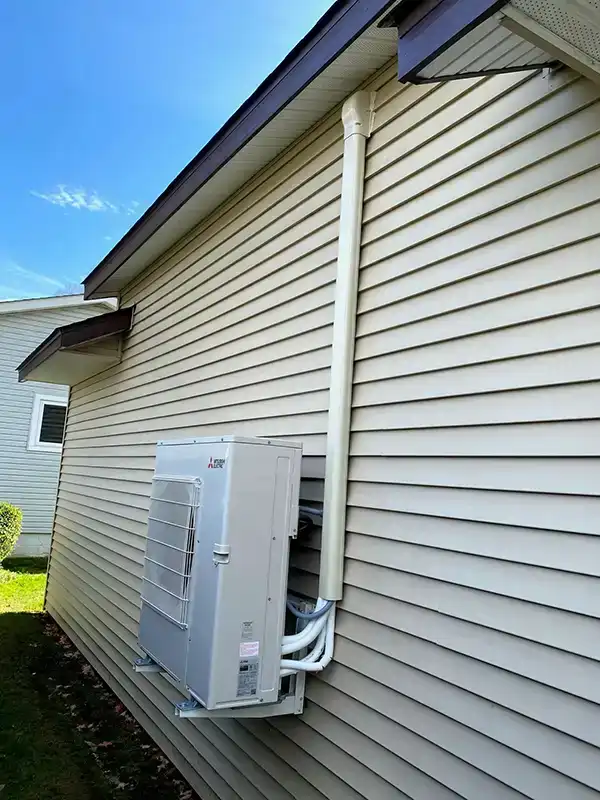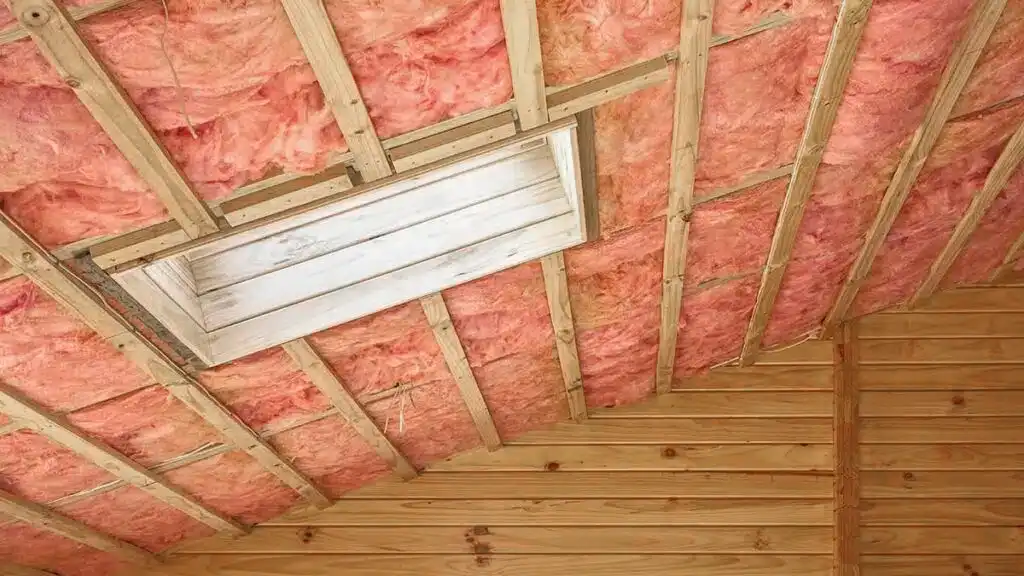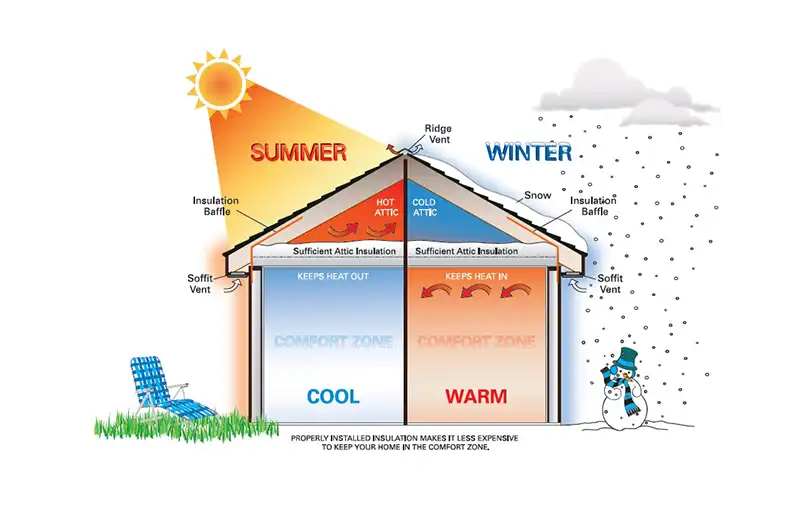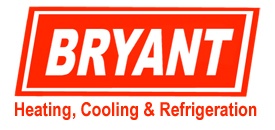How to Keep Your House Cooler this Summer
Beat the heat this summer! Discover 5 easy tips to keep your home cool and save on AC costs – from installing efficient mini-splits to utilizing fans effectively. Plus, learn the ideal temperature range (72°-78°F) for maximum efficiency. Get the full guide now!
- Use an air conditioning unit
- Use a Programmable Thermostat
- Properly insulate your home
- Run ceiling fans or portable fans
- Use window coverings effectively
Keep Your House Cooler this Summer with a Mini-Split
For those seeking an efficient cooling solution that won’t disrupt their home’s aesthetic, installing a mini-split system could be the answer. These compact air conditioning units are renowned for their whisper-quiet operation, ensuring that one’s peace isn’t disturbed by the hum of traditional AC units. Their sleek design allows them to be mounted seamlessly on walls or ceilings, blending in with any decor.
Mini-splits are particularly handy in homes without existing duct work. Instead of undergoing the costly and disruptive process of installing ducts or relying on inefficient window units, a mini-split offers an economical and hassle-free alternative. Designed for targeted cooling, these systems can efficiently cool the most frequently used areas without wasting energy on seldom-occupied spaces.
Like any air conditioning system, mini-splits require regular maintenance to perform optimally. An annual professional tune-up can ensure that one’s mini-split continues to keep their home cool and comfy for years to come.

A Programmable Thermostat can help Cool Your House this Summer
Investing in a programmable thermostat is a savvy move for those looking to efficiently manage their home’s cooling while saving on energy costs. These nifty devices offer unparalleled control over indoor temperatures, allowing users to set specific cooling schedules that align with their lifestyles.
During the day, when everyone’s out at work or school, there’s no need to keep the house as cool as when everyone’s home. A programmable thermostat can be set to start cooling the home just before everyone returns, ensuring a comfortable temperature upon arrival without wasting energy all day long.
Moreover, these thermostats can help curb the temptation of dropping the temperature excessively on scorching days, which can strain the system and increase energy consumption. Instead, maintaining a consistent, moderate temperature can help the air conditioner work more efficiently and prolong its lifespan.
What is a good AC temperature for efficiency?
Determining the right AC temperature for efficiency is crucial in maintaining a cool home while keeping energy costs in check. While precise preferences may vary, a setting between 72-78 degrees Fahrenheit is generally recommended for optimal efficiency during warm weather.
Keeping the AC within this range ensures a comfortable atmosphere while also conserving energy. Setting the thermostat too low can lead to sky-high energy bills and overwork the cooling system. It’s also important to note that the AC unit shouldn’t cool more than 20 degrees lower than the outdoor temperature.
A programmable or smart thermostat can be an excellent investment for maintaining an efficient temperature. These devices can be programmed to adjust the temperature at different times of the day, reducing energy usage when the house is empty or during cooler parts of the day.


Understanding Your Home’s Insulation is Vital to Keeping Your House Cool
While maintaining an optimal AC temperature is key, it’s equally important to understand your home’s insulation, as it plays a significant role in keeping your home cool and energy-efficient.
Insulation acts as a barrier to heat flow and is essential for keeping your home comfortable during the summer months. It reduces the amount of heat entering your home on hot days, thus lessening the need for air conditioning.
There are several types of insulation to consider – fiberglass, cellulose, and spray foam are the most common. Each has its own advantages and can be used in different parts of your home. For instance, fiberglass is often used in walls and attics, while spray foam is ideal for sealing air leaks around windows and doors.
It’s also important to check the R-value of your insulation. This measures how well the material resists heat flow. The higher the R-value, the better the insulation. If you’re unsure about your home’s insulation or R-value, consider hiring a professional for an energy audit. They can provide recommendations for improving your home’s insulation, ultimately keeping your house cooler in the summer.
Utilizing Fans Effectively
To maximize the cooling effect in your home during the hot summer months, it’s essential to use fans effectively. Fans don’t just provide a breeze; they circulate the air, making a room feel cooler than it actually is. For optimal effect, ceiling fans should rotate counterclockwise, pushing cool air down and creating a pleasant draft.
Portable floor fans can also be beneficial. They’re flexible and can be placed where needed most, particularly in rooms without ceiling fans. But remember, fans are cool people, not rooms. So, there’s no need to leave a fan running in an empty room.
For a higher impact strategy, try a window fan. On cooler nights, this fan can draw in the fresh, cool outdoor air. During the day, it’s best to close windows and blinds to trap the cool air inside and prevent the sun from heating up the room.
Lastly, don’t forget the bathroom exhaust fans. After a hot shower, these fans can expel warm, moist air out of your house, contributing to a cooler home environment.
By implementing these strategies – installing a mini-split, using a programmable thermostat, understanding insulation, and utilizing fans effectively – one can keep their home cool and comfortable all summer long without breaking the bank.
Use window coverings effectively
Close blinds, shades, or curtains during the day to block out direct sunlight and prevent solar heat gain. This is one of the most effective and low-cost methods for keeping your home cooler.
Professional Assistance
The complexities of diagnosing HVAC issues and evaluating repair versus replacement options highlight the importance of seeking assistance from experienced professionals. In Central Ohio, Bryant Heating and Cooling has been a trusted provider of such services for over 30 years.
Founded by expert technician Ron Bryant decades ago, the company brings extensive hands-on experience working with all major HVAC equipment manufacturers. Bryant Heating and Cooling specializes in comprehensive repair services, utilizing cutting-edge diagnostic tools to accurately pinpoint both obvious and hidden issues. Once problems are thoroughly assessed, their team outlines various solutions, guiding homeowners through recommended actions based on budget, priorities, and optimal return on investment. The company also offers routine maintenance agreements that allow for early problem identification, optimizing performance, and maximizing the useful lifespan of existing HVAC systems.








